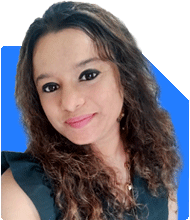Jinal Mehta | Answer |Ask -Follow
Financial Planner - Answered on Mar 18, 2024
She is the founder of Beyond Learning Finance, an authorised education provider for the CFP certification programme in India.
In addition, she manages a family office organisation, where she handles investment planning, tax planning, insurance planning and estate planning.
Jinal has a bachelor's degree in management studies. She also has a diploma in in financial management from NMIMS, Mumbai.
... more

*Sharanappa from kalburgi Karnataka* 30 year old unmarried, including me 3 members in family I have 36000 salary and investing 7500/month in SIP Mutual funds are direct growth *SBI midcap fund 1000* *SBI consumption opportunity fund 1000* *Parag parik tax saving fund 2000* *Quant small cap 2000* *Quant dynamic asset allocation fund 1000* *Digital gold 500/month* One year old portfolio ( around 1.2 lacks) 10-15 years time zone Please review sir *1cro Target* *Risk Agressive* I decided set up SIP 15% Everyone year
You may like to see similar questions and answers below
Nikunj Saraf | Answer |Ask -Follow
Mutual Funds Expert - Answered on Mar 29, 2023
Nikunj Saraf | Answer |Ask -Follow
Mutual Funds Expert - Answered on May 22, 2023
Ramalingam Kalirajan |10881 Answers |Ask -Follow
Mutual Funds, Financial Planning Expert - Answered on May 29, 2024
Ramalingam Kalirajan |10881 Answers |Ask -Follow
Mutual Funds, Financial Planning Expert - Answered on May 30, 2024
Kanchan Rai |646 Answers |Ask -Follow
Relationships Expert, Mind Coach - Answered on Dec 12, 2025
Ravi Mittal |677 Answers |Ask -Follow
Dating, Relationships Expert - Answered on Dec 12, 2025
Ramalingam Kalirajan |10881 Answers |Ask -Follow
Mutual Funds, Financial Planning Expert - Answered on Dec 12, 2025
Ramalingam Kalirajan |10881 Answers |Ask -Follow
Mutual Funds, Financial Planning Expert - Answered on Dec 12, 2025
Reetika Sharma |423 Answers |Ask -Follow
Financial Planner, MF and Insurance Expert - Answered on Dec 12, 2025
Reetika Sharma |423 Answers |Ask -Follow
Financial Planner, MF and Insurance Expert - Answered on Dec 12, 2025
Reetika Sharma |423 Answers |Ask -Follow
Financial Planner, MF and Insurance Expert - Answered on Dec 12, 2025
Reetika Sharma |423 Answers |Ask -Follow
Financial Planner, MF and Insurance Expert - Answered on Dec 12, 2025
Reetika Sharma |423 Answers |Ask -Follow
Financial Planner, MF and Insurance Expert - Answered on Dec 12, 2025
Mayank Chandel |2572 Answers |Ask -Follow
IIT-JEE, NEET-UG, SAT, CLAT, CA, CS Exam Expert - Answered on Dec 11, 2025

























